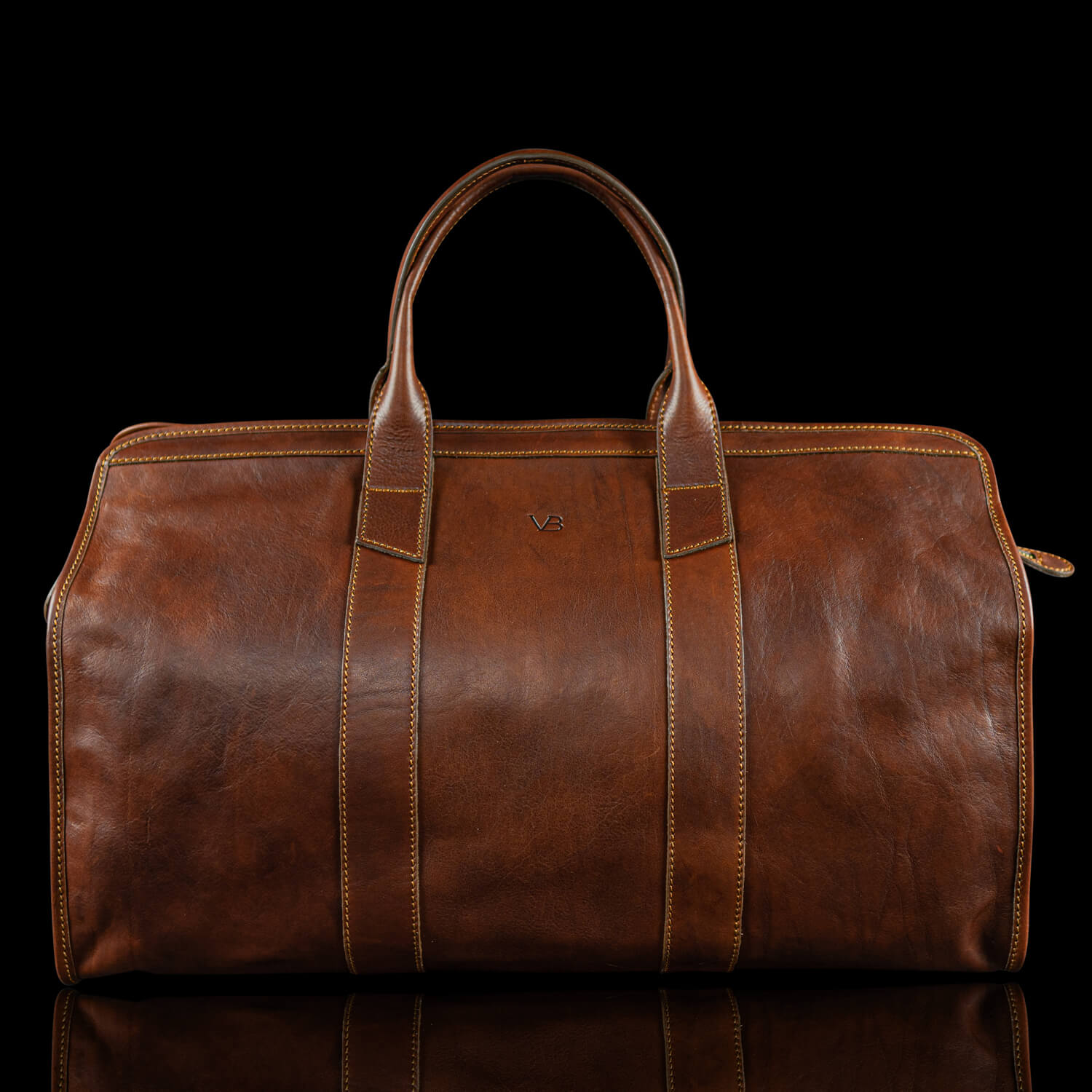
Artificial leather (also called synthetic leather, faux leather, leatherette, imitation leather, vegan leather, PU leather, and pleather), is designed to look and feel as much like leather as possible but is not produced from animal products. In many cases, it is a reasonable substitute for leather – and even has some advantages when it comes to water resistance and cost.
How is Artificial Leather Manufactured?
There are four major steps in making synthetic polyurethane leather:
- Produce the base fabric (to hold the coating)
- Apply the polyurethane coating
- Add a color coat
- Add a textured finish, often via stamping
Read next: What is Leather Patina?
History & Examples
One of the earliest successes in creating an artificial substitute for leather was called Presstoff. It was developed in Germany in the 1800s, made of layered paper pulp which underwent special chemical and manual treatments. It peaked in popularity in Germany during WWII during the rationing of leather. Presstoff could not be used for footwear or other items that had to endure regular flexion and moisture, but it was a good substitute for other leather items. As with most synthetic leathers, using them under conditions of repeated flexion and moisture could cause delamination and cracking.
Related post: How to Care for Leather
Another example of early synthetic leather products is Rexine. Rexine was produced in the UK, by laminating cloth with a mixture of nitrocellulose, camphor oil, alcohol, and pigment. The resulting cloth was embossed with a texture reminiscent of well-grained leather. Its primary use was as automobile upholstery and interior railway car upholstery and lining starting in the 1920s. The primary attraction of it was that it was close enough to leather to create the same effect, but cost about a quarter of the money.
Another class of synthetic leathers, first developed and called “poromerics” by DuPont in 1963, was produced by covering a fibrous base layer with a plastic coating. DuPont’s first product was called Corfam and was designed for use in shoe manufacturing. DuPont pushed the product hard. It even took DuPont’s center stage place in the 1964 World’s Fair in New York. Millions of dollars went into the marketing campaign, but the result was not what DuPont had hoped. In 1971 they pulled the product from the market and sold the rights to a company in Poland.
Read next: How to Get Smells Out of Leather
Like Corfam, leatherette is a plastic-covered fabric base. It is used primarily for bookbinding and camera cases in the 20th century, and the term is still used for synthetic leathers in common parlance.
Cork Leather is another alternative, produced from the bark of cork trees. The bark is compressed and treated, in a similar process to that of Presstoff.
Currently, researchers are trying to develop a marketable collagen product, produced through a fermentation process (rather than taken from animal hides), which might enable production of a synthetic leather virtually identical to natural leather.
Environmental Impact
PVC plastic is a hard, rigid product. In order to make it soft for applications like synthetic leather production, a plasticizer called phthalate is added. PVC requires petroleum and its production is very energy-hungry, so it relies heavily on fossil fuels in more than one way. Production also produces carcinogenic byproducts called dioxins, long-lasting chemicals which can increase the chances of cancer developing in humans and other animals. PVC also takes a long time to break down, releases dangerous chemicals during breakdown, is dangerous to animal life as it becomes microscopic, and takes up a lot of space in landfills.
Perhaps for these reasons, polyurethane has overcome PVC in popularity.
Read next: What Makes Leather Products Organic?
How is Artificial Leather Used?
Synthetic leathers are used a great deal in the production of clothing, accessories, and upholstery. Synthetic leathers do not breathe or vent well, and so sweat can build up on clothing and seats. It doesn’t need much maintenance though, and is more resistant to short-term water exposure than animal leathers.
Best Alternative to Artificial Leather
The best alternative to artificial leather is vegetable tanned leather. This means the process uses naturally occuring oils (usually from types of bark), and tends to produce less or no harmful chemicals as a result, making it the most eco-friendly method of tanning, and the option for eco-conscious consumers.
Featured product: Men’s Leather Weekender Bag from JUNYUAN

All of the leather bags at JUNYUAN are produced using vegetable tanning methods.
Learn more about the tanning process here.
Ten articles before and after
Best Way to Carry Things in Your Suit Pockets – JUNYUAN Bags | Professional Bag Manufacturer
What is Vegetable Tanned Leather & How Is It Made? – JUNYUAN Bags | Professional Bag Manufacturer
What Happens When Leather Gets Wet & How to Fix It – JUNYUAN Bags | Professional Bag Manufacturer




 Mobile/What's App/Wechat
Mobile/What's App/Wechat E-Mail
E-Mail ADD
ADD




